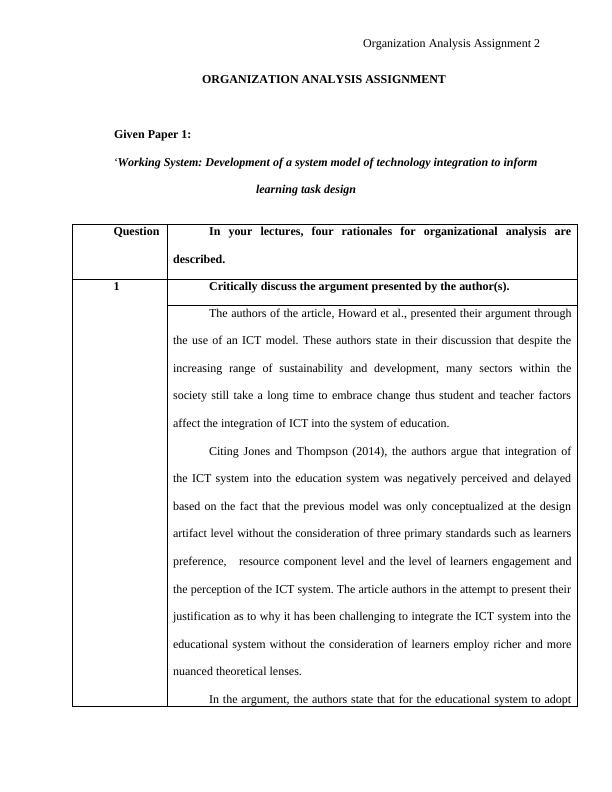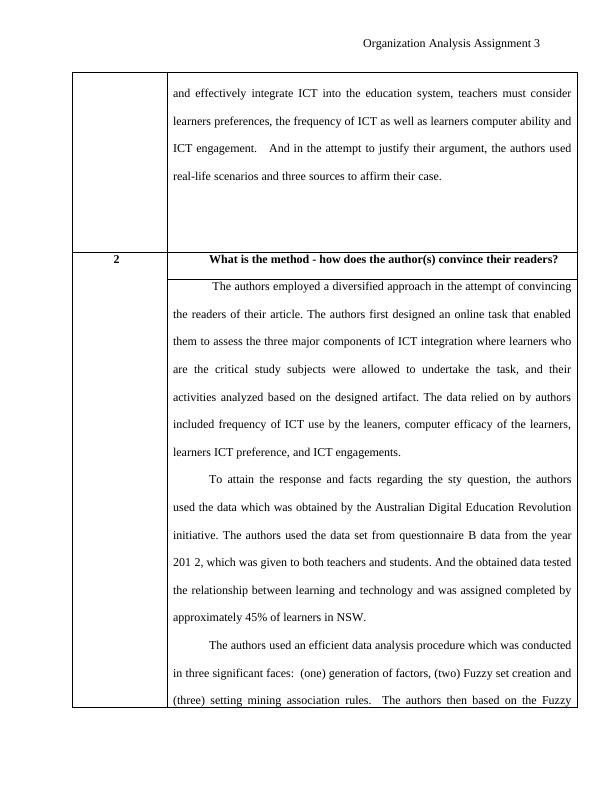Organization Analysis Assignment 2
14 Pages3045 Words157 Views
Added on 2022-10-19
About This Document
Read this Organization Analysis Assignment 2 to understand the rationales for organizational analysis and how authors convince their readers. Get insights into the neohumanist paradigm, radical structuralist paradigm, functionalism rational, and social relativism.
Organization Analysis Assignment 2
Added on 2022-10-19
ShareRelated Documents
End of preview
Want to access all the pages? Upload your documents or become a member.
Critical Deconstruction of Literature
|9
|2307
|199
Organisational Analysis Assignment 2022
|9
|2660
|23
Critical Literature Analysis on Technology Integration in Education
|11
|3191
|446
Organisational Analysis Assignment 1
|9
|2666
|170
Four Rationales of Organizational Analysis
|7
|2494
|455
Organisational Analysis Assignment 1
|10
|2801
|193




